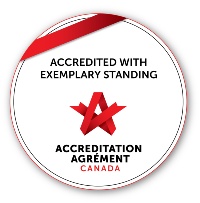Be sun safe
EN | FR
What is sun safety?
Sun safety means reducing harmful exposure to ultraviolet (UV) radiation, while still being able to enjoy the outdoors. UV radiation is invisible and can come from the sun or from other sources such as indoor tanning and sun beds. UV radiation can be damaging to the skin and eyes without appropriate protection.
What are the benefits of being sun safe?
Being sun safe can reduce your risk of:
- premature aging/wrinkles
- heatstroke
- diseases of the eye
- skin cancer
In most cases the benefits of being sun safe outweigh the benefits of sun exposure. For example, vitamin D is a benefit of sun exposure but we can also get vitamin D from our diet. Examples of vitamin D containing foods include egg yolks, some dairy products such as cheese, and fatty fish, like tuna, mackerel, and salmon.
Which cancers can be prevented?
Exposure to the sun and other sources of UV radiation causes up to 90% of skin cancers and other skin and eye damage. According to the 2006 National Sun Survey, adults from Manitoba were most likely to spend time in the sun for at least two hours on a typical summer day and are least likely to practice sun protection behaviour.
There are two types of skin cancer that can be caused by UV radiation.
- Melanoma skin cancer starts in the melanocyte cells of the skin. Melanocyte cells are responsible for giving skin, hair, and eyes their colour. These cells provide protection against the sun, hot temperatures, and germs. In some cases, changes to these cells can cause melanoma skin cancer.
- Non-Melanoma skin cancer starts in the basal, squamous or Merkel cells of the skin. UV radiation can cause uncontrollable growth of cells in the skin and can sometimes lead to non-melanoma cancer.
In 2015, it was estimated that about 60% of melanomas in Canada were attributable to exposure to UV radiation, about 29% were attributable to the combination of sunburn, sunbathing, and indoor tanning. Skin cancer is the most common type of cancer in Canada, but also one the most preventable. As an example, we could prevent around 260 cancer cases in 2038 if people in Manitoba and Saskatchewan practice sun safety, starting today.
How can you prevent cancer by being sun safe?
Being sun safe protects your skin and eyes from UV radiation exposure, which can help prevent cancer. Protection from UV rays is important all year, not just during summer time as UV rays can reach you on cloudy and cool days. There are three types of cancer-causing UV radiation:
- UVA can enter deep into our skin and can cause tanning and premature skin aging. It also plays a role in the development of certain skin cancers.
- UVB enters the outer layer of the skin and is responsible for slower tanning, sunburns, and most skin cancers.
- UVC is dangerous, even with a short exposure. However, UVC radiation does not reach Earth as it is filtered out by the ozone layer.
UV radiation can change skin cells and can cause uncontrolled cell growth, which can develop into cancer. The cells can group together and form moles (bumps or spots that are brown or pink) on the skin. Moles are usually non-cancerous tumors, but a change in size, colour, or shape of the mole may be a first sign of melanoma skin cancer.
How can I be sun safe?
Sun safety is important all year round, not just in the summer. UV radiation can reach you on a cloudy day, and they can reflect off of snow, water, sand, and concrete. A few safety measures could prevent much of the cancer due to UV radiation. To reduce your risk of cancer:
- Avoid getting a sunburn by covering up and checking the UV index every day. The UV index is available in daily weather reports and estimates the strength of the UV rays each day. Protect your skin as much as possible when the UV index is 3 or higher. Wear protective clothing, lip balm with SPF (Sun Protection Factor), a wide-brimmed hat, sunglasses, and sunscreen, even when it’s cloudy.
- Generously use sunscreen labelled “broad spectrum” and “water resistant” with an SPF of at least 30 on all exposed skin. Read and follow the instructions. Re-apply if you are out in the sun for more than two hours and after swimming.
- Limit your time in the sun between 11 a.m. and 3 p.m. The UV index can be highest during these times. Take a shade umbrella with you and look for places with shade when outside.
- Do not use tanning equipment. Tanning equipment can damage the skin and can increase the risk of developing melanoma.
Here are some more programs and resources to help you be sun safe.
Programs and Services
Canadian Cancer Society: School SunSense Program
Sun Safety at Work: Build Your Own Sun Safety Programs
Government of Manitoba: Summer Health
Health Canada: Sun safety
Canadian Cancer Society: Be Sun Safe
Canadian Dermatology Association: Sun Safety for Every Day

